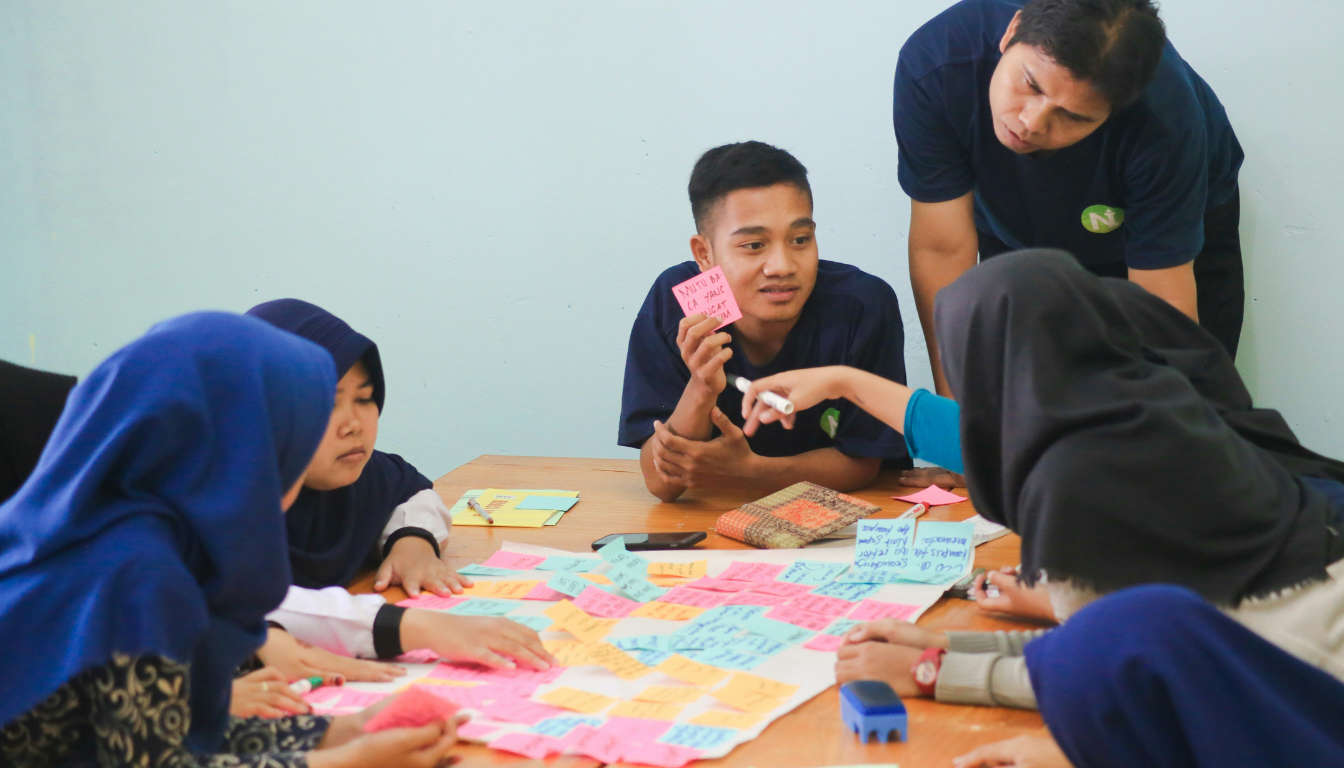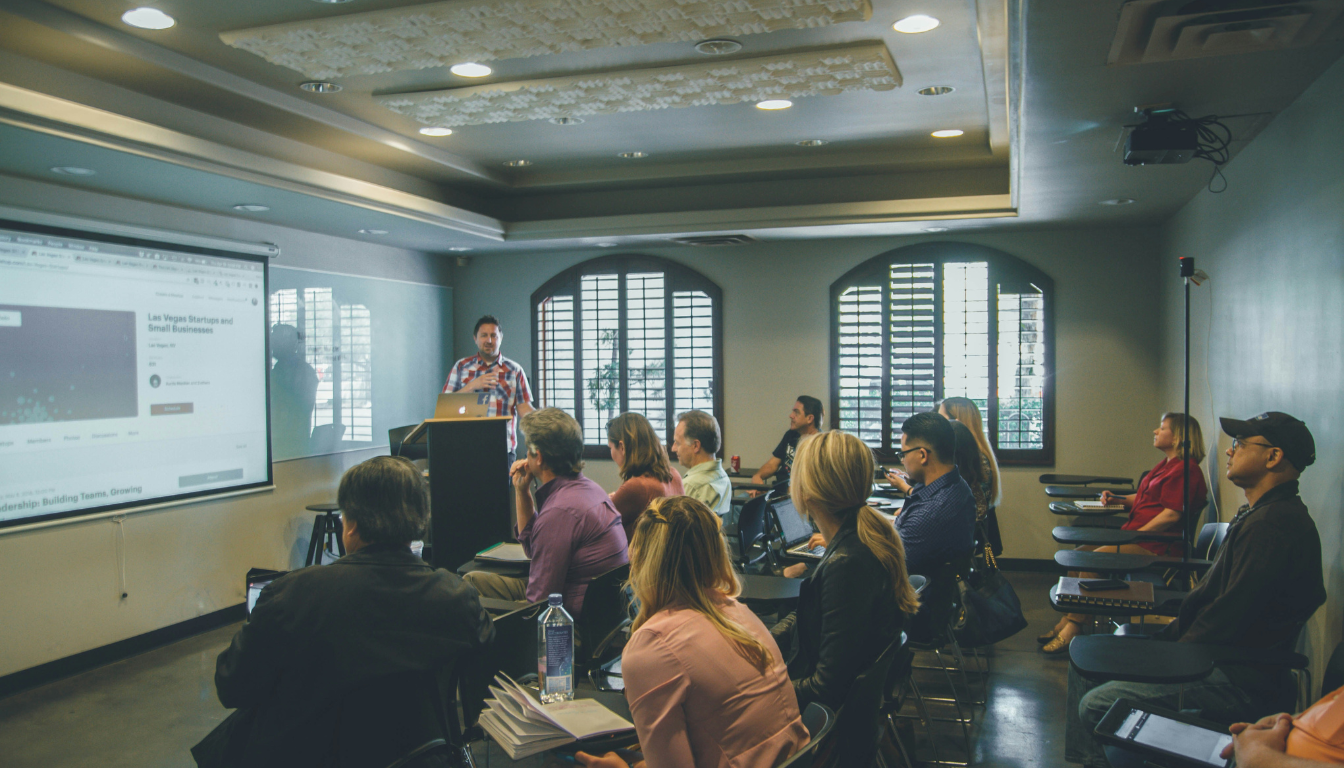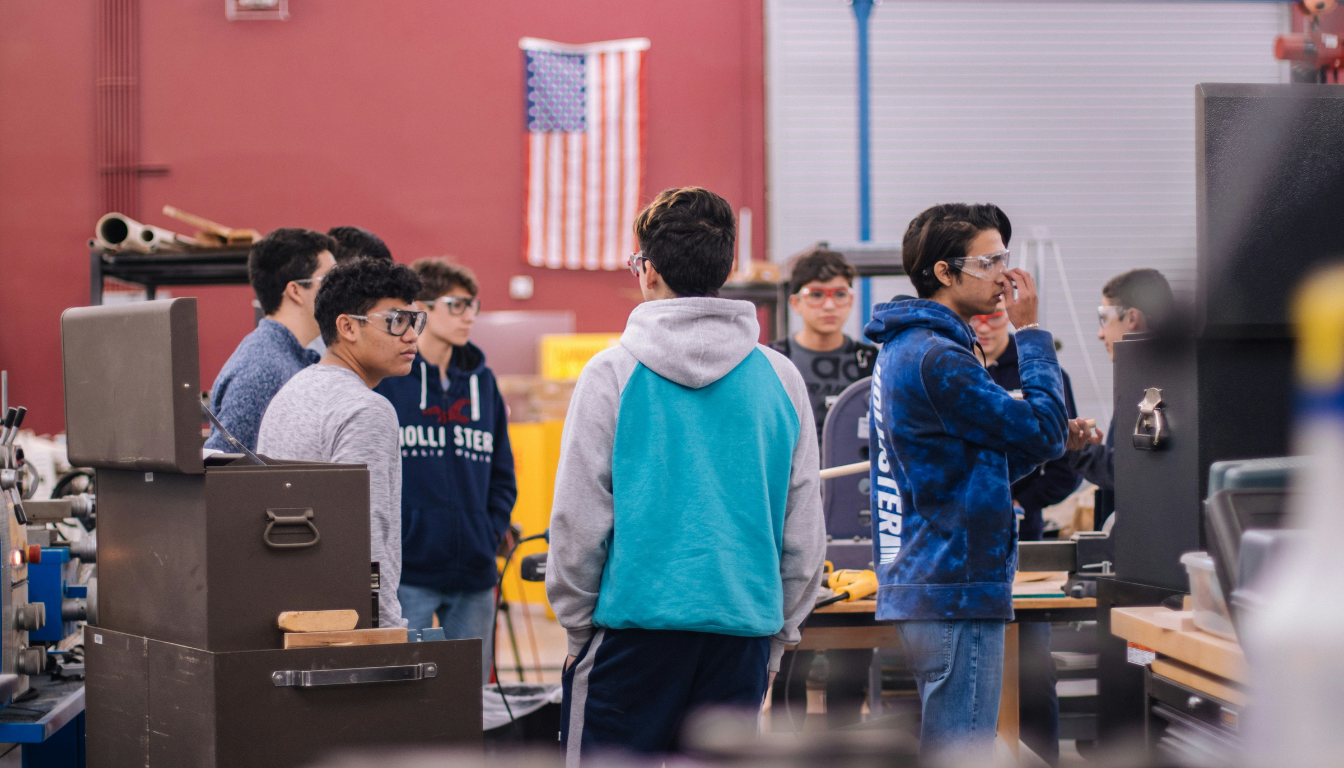Effective Strategies for Team Productivity Improvement

Are you looking to boost team productivity improvement quickly and effectively? This article will provide you with proven strategies for improving your team’s productivity. From understanding basic principles to leveraging technology, these tips will help you create a more efficient and cohesive team.
Key Takeaways
- Understanding and fostering a positive work environment is essential for enhancing team productivity and morale.
- Implementing strategies such as regular recognition of achievements and clear communication of goals significantly boosts team engagement and effectiveness.
- Leveraging technology, including AI and workforce optimization tools, plays a critical role in streamlining workflows and enhancing overall team productivity.
Understanding Team Productivity

Team productivity is the harmonious blend of collaboration, effective communication, and the strategic use of each team’s strengths to achieve common goals. When a team operates productively, it not only accelerates individual career advancement but also propels the entire organization toward success by fulfilling objectives and maintaining a competitive edge.
However, achieving high productivity is not a mere accident. It requires accurate goal-setting, ample resources, motivation, and performance measurement, making the team effective.
A positive work environment is indispensable for a productive team. It directly impacts how employees feel, think, and perform, ultimately boosting overall productivity. A culture of support and recognition helps teams efficiently complete tasks, meet deadlines, and deliver quality results. Understanding these foundational elements is the first step in creating a productive team environment. To that end, some organizations have leveraged specialized offsite retreat planning—such as those offered by Offsite—to foster strategic alignment, strengthen team morale, and drive performance in thoughtfully designed environments conducive to focus and collaboration.
Key Benefits of Improving Team Productivity

Improving team productivity brings a multitude of benefits, starting with significantly increased job satisfaction and a healthier work environment. When teams are productive, they make fewer mistakes and produce higher quality work, leading to better outcomes and a more positive workplace atmosphere. This not only enhances job satisfaction but also contributes to better customer experiences, which in turn positively affects team productivity and overall satisfaction and loyalty.
Investment in team productivity is an investment in employee productivity and the organization’s success. Higher productivity levels lead to continuous improvement in processes, which can help increase productivity with less effort, boosting team morale and engagement.
The ripple effect of a productive team extends beyond immediate tasks, fostering a culture of excellence and innovation that permeates the entire organization. Focusing on team productivity enables companies to achieve key goals more efficiently and effectively.
Strategies to Improve Team Productivity
Boosting team productivity requires a multifaceted approach, tailored to the unique needs of each cross functional team. Implementing new technologies can optimize workflows, while improving team efficiency and maintaining team unity can significantly enhance productivity.
The upcoming sections will explore strategies like celebrating achievements, fostering a healthy work environment, and addressing roadblocks to improve team productivity.
Celebrate Achievements Regularly
Recognizing and celebrating achievements is a powerful way to boost team morale and motivation. Whether it’s a shoutout in a meeting or a private message, acknowledgment makes team members feel valued and appreciated. Customizing recognition based on individual preferences can make the acknowledgment even more meaningful. Incentives such as cash rewards, vouchers, or extra time off can serve as additional motivation for employees.
Failing to recognize good work can lead to resentment and negatively impact team dynamics and performance. Regular feedback and celebrations of success not only improve productivity but also foster a collaborative and positive work environment, as not everyone may feel appreciated otherwise. Prioritizing these practices helps teams maintain high morale and continuous improvement.
Foster a Healthy Work Environment
Creating a healthy work environment is crucial for optimal team performance. Stress and burnout are major productivity killers, and a supportive atmosphere can mitigate these issues. Simple changes like incorporating bright lighting, comfortable furniture, and plants can significantly enhance the work environment. Encouraging breaks, personal check-ins, and promoting work-life balance also contribute to a healthier and more positive corporate culture.
A positive work culture not only improves motivation but also leads to greater overall efficiency. Allowing team members personal time increases their invigoration and readiness to work hard. Activities such as meditation, wellness goals, and regular check-ins can support team members’ well-being, reducing stress, preventing burnout, and ultimately improving performance.
Identify and Address Roadblocks
Identifying and addressing roadblocks is essential to maintain high team productivity. Regular feedback sessions help pinpoint obstacles that hinder productivity. Gathering feedback from team members about their work challenges provides insight into common issues like workplace distractions, communication gaps, and low morale.
Once roadblocks are identified, they should be prioritized for resolution based on their potential impact and available resources. Managers should also recognize team members’ strengths to identify areas where they are making the best use of their skills.
Addressing these challenges proactively prevents major problems and keeps the team on track toward achieving their goals.
Leveraging Technology for Productivity

Leveraging technology is a game-changer for improving team productivity. Investing in the right tools and resources is foundational to making a team more effective. Project management and communication tools, including powerful tools, can enhance collaboration and streamline workflows, allowing teams to focus on more creative and impactful tasks.
Next, we’ll explore how AI tools and workforce optimization can further boost productivity.
Utilize Artificial Intelligence (AI) Tools
Artificial intelligence (AI) tools can significantly improve team productivity by automating mundane tasks and optimizing workflows. AI chatbots and call centers, for example, can handle low-impact tasks, freeing up team members to focus on more complex and creative work. Zendesk AI, specifically, enhances productivity by automating tasks and providing valuable insights from day one of implementation.
Investing in training is crucial to ensure proper use of these new tools. When team members are proficient with AI tools, they can leverage them to maximize efficiency and performance. This not only improves team productivity but also enhances the overall effectiveness of the organization.
Implement Workforce Optimization (WFO) Tools
Workforce optimization (WFO) tools are designed to streamline workflows, manage scheduling, time tracking, training, and communication. These tools provide visibility across the team, making it easier to reassign tasks without needing to contact everyone individually. Companies using WFO tools, like Monese, have experienced significant time savings, with up to an 82 percent reduction in scheduling inefficiencies.
WFO tools also facilitate better communication among team members through platforms like Slack or Asana. By integrating these tools into daily workflows, teams can operate more efficiently, maintain better alignment, and ultimately boost productivity.
Setting Clear Goals and Expectations
Setting clear goals and expectations is vital for guiding team performance and improving productivity. Establishing performance metrics provides a foundational approach to evaluating and rewarding productivity.
Next, we will discuss how to establish team goals and communicate clear expectations effectively.
Establish Team Goals
Establishing clear team goals is essential for improving team productivity. Workforce planning templates can assist in defining these goals, ensuring that everyone is aligned and working toward shared objectives. Identifying big goals helps to unify the team and provides a clear direction for their efforts. Collaborative goal-setting further enhances engagement and fosters a sense of shared responsibility among team members.
Linking individual goals to broader organizational objectives promotes teamwork and enhances overall productivity. Managers should clarify roles and responsibilities to prevent overlaps and confusion, which can hinder team efficiency. Regular check-ins and monitoring progress through tools help maintain accountability and ownership among team members.
Communicate Clear Expectations
Clear communication of expectations is crucial for guiding team performance and improving productivity. Expectations should be clearly defined, including job responsibilities, to ensure proper communication so that team members have a clear understanding of their roles. Regular communication keeps employees aligned with the team’s objectives and fosters proper communication.
Constructive feedback plays a vital role in maintaining a culture of openness within the team. Providing consistent feedback through peer coaching can enhance both individual and team performance. When giving feedback, it should include actionable goals for improvement and development. Clarity in defining roles and responsibilities helps to reduce redundancy and improve team efficiency. Constructive criticism can also contribute to this process.
Encouraging Collaboration and Communication

Collaboration and communication are the bedrock of a productive team. Enhanced teamwork leads to increased problem-solving capabilities and innovative solutions, benefiting overall team outcomes by communicating effectively with the whole team. There are various ways to improve team dynamics and performance.
In the following sections, we’ll explore strategies to promote open communication and facilitate collaboration within the team.
Promote Open Communication
Effective communication across teams enhances collaboration and ensures everyone is aligned on objectives. Utilizing tools like Slack can assist in maintaining effective communication within the team. Encouraging knowledge sharing through internal notes and discussing projects in standing meetings can significantly enhance team collaboration.
Standing meetings, ideally lasting fifteen minutes, provide a platform for team members to connect and share project updates. Providing an agenda and talking points before these meetings prepares participants to engage effectively. Public appreciation and discussing workloads openly can inspire team members and prevent stress and mistakes. To maximize effectiveness, it is beneficial to hold standing meetings regularly and stand up for the team’s needs.
Promoting vulnerability within the team encourages learning from failures and seeking help, fostering a culture of openness and trust.
Facilitate Collaboration
Facilitating two-way communication ensures that all team members feel heard and valued, which enhances collaboration. Creating a mentoring program can enhance teamwork by pairing experienced staff with new members, fostering relationships and collaboration. Encouraging teams to establish unique traditions can strengthen bonds and work connections and improve collaboration in a relaxed atmosphere.
Peer coaching fosters a supportive environment that encourages shared learning and collaboration. Promoting these practices allows teams to work more effectively, leveraging each other’s strengths to achieve their goals.
Training and Development Opportunities
Training and development opportunities are crucial for improving team productivity. We offer training that ensures employees remain proficient and knowledgeable about their roles.
Next, we’ll discuss the importance of regular training and encouraging peer coaching to foster continuous learning.
Offer Regular Training
Regular training is vital for developing employees’ skills and enhancing overall efficiency within the team. It helps employees acquire new skills that are essential for their current and future roles. Effective training programs can lead to reduced time for new employees to become fully productive.
Ongoing training ensures that team members are up-to-date with the latest tools and practices, enabling them to perform their tasks more effectively. This continuous learning approach not only boosts individual performance but also enhances overall team productivity.
Encourage Peer Coaching
Peer coaching is a method for team members to assist each other in skill development. Team members can support each other’s growth by coaching each other based on their unique skills. This approach provides a safe way for team members to try new skills and enhance their learning.
Encouraging peer coaching fosters a supportive and collaborative environment where team members feel valued and empowered. This not only enhances team performance but also boosts overall team productivity.
Managing Workloads Effectively
Effective workload management is essential for maintaining team productivity. Establishing boundaries like manageable workloads and regular work hours is crucial for improving employee experience and preventing burnout.
Next, we’ll explore setting realistic workloads and respecting working hours to ensure a healthy work-life balance.
Set Realistic Workloads
Avoiding micromanagement and trusting team members is crucial for improving productivity. Regular feedback on workloads helps adjust tasks according to team capacity, reducing burnout. Project management tools can assist in assigning tasks, setting deadlines, and tracking progress to effectively manage workloads.
Breaking down projects into smaller, manageable tasks and other tasks with specific set deadlines aids in workload management. Using techniques like the Pomodoro method can help prioritize tasks, maintain focus, and encourage short breaks to sustain productivity while addressing high priority tasks.
Respect Working Hours
Respecting working hours is crucial for maintaining overall team productivity and preventing burnout. Time off is essential for recovery and helps in maintaining high levels of productivity. Strategies to maintain a healthy work-life balance include setting clear boundaries for work hours and encouraging regular downtime, allowing for valuable time to recharge in one’s personal life.
When employees are overloaded with work, it can cause stress, careless mistakes, and potential slowdowns in productivity. Ensuring that team members have adequate time to rest and recharge is vital for sustaining long-term productivity and creating a positive work environment.
Building Trust Within the Team
Building trust within the team is fundamental for enhancing productivity. Trust strengthens self-belief and positive contributions among team members, leading to higher motivation and engagement.
Next, we will explore fostering mutual trust and effectively supporting team members.
Foster Mutual Trust
Encouraging open communication, safety, and innovation fosters trust among team members. A team leader should encourage team members to approach them with any questions or concerns to improve communication. Supporting positive change, clear communication, and showing confidence in the future inspire trust from employees.
Respecting working hours prevents burnout and maintains productivity levels, which in turn enhances team morale. Encouraging an organizational culture that promotes vulnerability allows teams to learn from mistakes and seek support, strengthening trust. Ending feedback discussions positively can promote a culture of openness and trust within the team.
Support Team Members
Supporting team members in their person’s role builds a sense of belonging and enhances morale overall, boosting morale. When team members feel supported, they demonstrate higher levels of engagement, resulting in improved performance and increased productivity. Offering resources such as mentorship programs and training opportunities empowers team members to develop their skills.
Implementing regular check-ins and feedback sessions fosters open communication and makes team members feel valued, leading to a more productive environment. By providing the necessary support, teams can work more effectively and achieve their goals.
Utilizing Offsite Retreats for Team Building

Offsite retreats can significantly improve team productivity and efficiency by providing a space for teams to refocus, realign, and reenergize. These retreats offer an opportunity to strengthen collaboration, clarify goals, and unlock team potential.
Next, we will discuss planning effective retreats and leveraging Offsite’s services.
Plan Effective Retreats
Offsite designs and delivers impactful retreats that strengthen collaboration, clarify goals, and unlock team potential. Well-planned retreats provide a platform for teams to connect on a deeper level, fostering stronger relationships and better communication through deep work.
To plan an effective retreat, it’s important to focus on activities that promote team bonding and goal setting. Providing a mix of structured sessions and free time allows team members to engage in meaningful discussions and reflect on their objectives.
Leverage Offsite Services
Offsite provides end-to-end offsite planning services, including venue selection, speakers and facilitators, travel providers, event producers, activity providers, and swag. Companies that have used Offsite’s services have saved over $3.2 million while increasing employee engagement, retention, and alignment through transformational team retreats.
The Offsite Marketplace helps users discover highly rated hotels, meeting spaces, and vendors for corporate retreats, offsites, or customer conferences. Users can receive exclusive discounts of up to 40% off retail rates when booking through Offsite.
Leveraging these services can enhance team performance and ensure a successful and impactful retreat.
Summary
Improving team productivity requires a comprehensive approach that includes recognizing achievements, fostering a healthy work environment, leveraging technology, setting clear goals, and encouraging collaboration. By implementing these strategies, teams can enhance their performance, boost morale, and drive organizational success. Remember, a productive team is the backbone of any successful organization. Embrace these strategies and watch your team thrive.
FAQs
- How can recognizing team achievements improve productivity?
Recognizing team achievements significantly enhances productivity by boosting morale and motivation, making members feel valued. This heightened engagement directly contributes to improved overall performance.
- What are the benefits of using AI tools for team productivity?
Using AI tools significantly enhances team productivity by automating routine tasks and streamlining workflows, enabling team members to dedicate their efforts to more complex and creative functions. This leads to a more efficient and effective collaborative environment.
- How do offsite retreats enhance team productivity?
Offsite retreats enhance team productivity by fostering collaboration, clarifying goals, and rejuvenating team dynamics. This focused environment helps unlock the full potential of team members, leading to greater efficiency.
- Why is it important to set clear goals and expectations for a team?
Setting clear goals and expectations is vital as it directs team performance, aligns efforts with organizational objectives, and fosters accountability, ultimately enhancing productivity.
You may also like
Unique spaces for your next offsite
Find distinctive venues for your upcoming corporate retreat.
Stay Updated with Our Insights
Get exclusive content and valuable updates directly to you.







